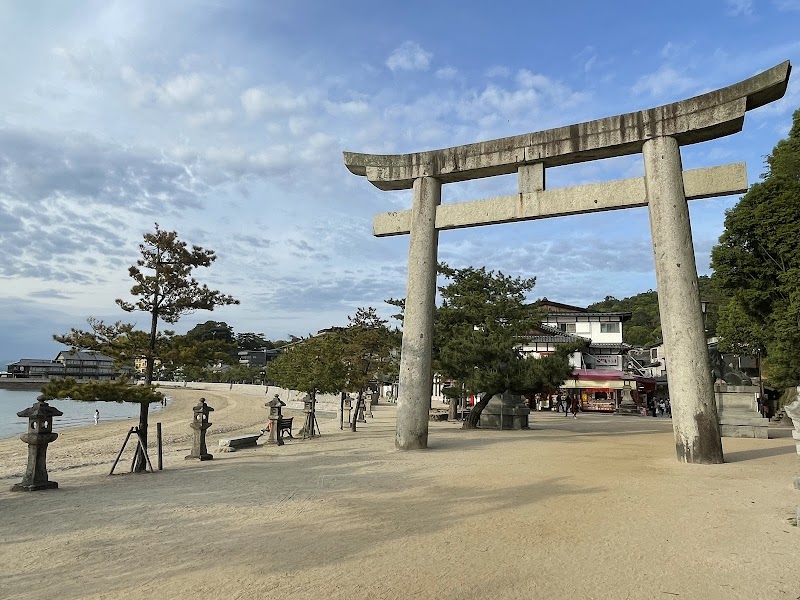
The Miyajima Oyster Festival: A Feast of Flavor and Tradition in Hiroshima
The Miyajima Oyster Festival in Hatsukaichi, Hiroshima, offers a vibrant mix of fresh shellfish, local culture, and coastal adventure. Join the lively crowd in late February to savor some of Japan’s best oysters while exploring the island’s natural trails and sweeping sea views.
Dress in Layers
February weather on Miyajima can shift quickly; layering helps you stay comfortable during the cold festival hours and warmer hikes.
Wear Slip-Resistant Footwear
Festival grounds near oyster shucking areas can be wet and slippery. Sturdy shoes with good traction reduce accident risk.
Hydrate Often
The salty oysters demand good hydration. Carry water and take breaks during hikes to keep energy levels steady.
Arrive Early for Crowd Control
To avoid peak rush and fully enjoy oyster tastings and local vendors, aim to arrive when the festival opens in the morning.
The Miyajima Oyster Festival: A Feast of Flavor and Tradition in Hiroshima
Every February, Hatsukaichi’s Miyajima Island bursts with energy as the Oyster Festival unfolds—a hands-on celebration rooted in nature and local culture. Here, the Pacific Ocean’s winter chill sharpens the taste of Miyajima’s famed oysters, known across Japan for their plumpness and briny depth. The festival does more than showcase fresh seafood; it invites visitors into the island’s coastal rhythms, where fishing boats ride slow waves and forested hills press close to sea-salt air.
The festival site sits near the island’s ferry terminal, making access straightforward from Hiroshima city. Stalls heat charcoal grills where oysters sizzle, releasing a tempting, smoky tang that beckons passersby. Beyond oysters, expect seasonal seafood, local sake, and the occasional taiko drum pulse—a reminder that here, food and festivity build community.
Planning your visit means timing your arrival for freshness and comfort. The festival typically runs through late February, a season when crisp air bites and crowds are manageable. Dress in layers; the weather sways between chilly and mild, especially when ocean breezes weave through town. Waterproof shoes are a must: the oyster shucking areas can be wet and slippery underfoot.
Adjacent to the festival, the island’s natural vigor awaits. After tasting your fill, venture onto trails that thread through Momijidani Park’s evergreen canopy or climb gently towards Mt. Misen for sweeping views of the Seto Inland Sea. Distances vary from short 30-minute walks to challenging ascents of about 4 km with 535 meters elevation gain, rewarding hikers with a panorama that rivals the festival’s hearty flavors.
Hydrate thoroughly before and after your culinary adventure—the salty oysters pair best with plenty of water. If you’re driving, plan parking near the ferry terminals and allow time for the 10-minute boat crossing. Engage with locals; fishermen often share stories of harvests and tides, anchoring your experience in Hatukaichi’s living heritage.
Through cold winds or quiet sunlit moments, Miyajima Oyster Festival offers an honest experience. The oysters themselves seem wild actors in an annual ritual — fierce and fresh, demanding respect and attention. For anyone curious about the intersection of nature’s rhythm and human labor, this festival supplies both memory and material for your next adventure.
Nearby Trips
All Adventures
Boat Charters
Water Activities
Adventures near Hatsukaichi, Hiroshima
Discover the unique and memorable adventures that make Hatsukaichi, Hiroshima special.
Frequently Asked Questions
When exactly is the Miyajima Oyster Festival held?
The festival generally takes place in mid to late February, lasting about one to two weeks. Exact dates vary yearly, so check local tourism sites for updates.
How can I access Miyajima Island for the festival?
Most visitors take a 10-minute ferry from Miyajimaguchi Port in Hatsukaichi, Hiroshima. The ferry runs frequently, and it’s best to arrive early, especially during festival weekends.
Are there any hiking opportunities near the festival?
Yes. Trails around Momijidani Park and the summit of Mt. Misen are popular. Mt. Misen requires moderate fitness and climbing skill with about 4 km distance and 535 m elevation gain.
What local wildlife might I see during my visit?
Beware of friendly but hungry deer wandering near the ferry terminal and park areas. Birdwatchers can spot native species like the Japanese white-eye among the trees.
Do vendors accept credit cards at the festival?
Mostly, the festival vendors prefer cash transactions. It’s advisable to bring yen, as some smaller stalls may not take cards.
Is the oyster shell waste disposed of safely at the festival?
Yes, local organizers prioritize environmental care by collecting oyster shells for recycling or use in agricultural soil amendment.
Recommended Gear
Waterproof Hiking Shoes
Provides grip and protection against wet and slippery festival grounds and forest trails.
Layered Clothing
Allows easy adjustment to temperature changes between oceanfront and forest hikes.
Reusable Water Bottle
Stay hydrated throughout oyster tastings and hiking activities.
Compact Rain Jacket
Prepares you for unexpected showers or ocean breezes without burdening your pack.
Local Insights
Hidden Gems
- "Momijidani Park’s quiet paths away from festival crowds"
- "The small shrine at the base of Mt. Misen, a peaceful spot often missed by tourists"
- "Shishiiwa Observatory for a less crowded view of the Seto Inland Sea"
Wildlife
- "Sika deer roam freely but respectfully, their curious eyes watching passersby"
- "Japanese white-eyes and varied sea birds follow fishing boats close to shore"
History
"Miyajima’s oyster cultivation dates back over a century, embedded in local community life as both livelihood and celebration. The festival honors this heritage while highlighting sustainable fishing practices led by generations of Hatsukaichi fishermen."
